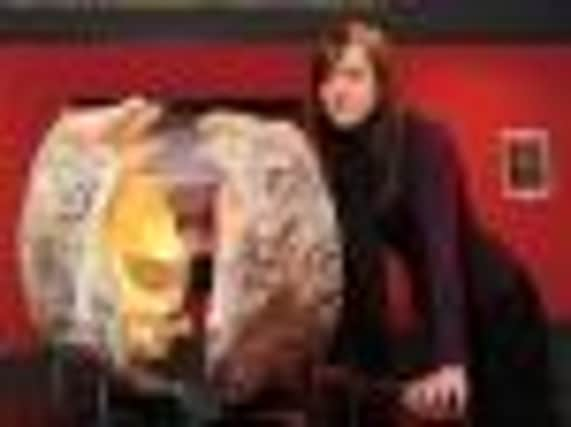The Hunterian Museum has become a bit of a period piece


The answer is the Hunterian Museum, which first opened in 1807. It is Scotland’s oldest museum and one of the oldest in the world, created to house the extraordinary, encyclopedic collections of Dr William Hunter, anatomist, collector and “man-midwife” to Queen Charlotte, wife of George III.
This year, in a new exhibition, The Unrivalled Collection: The Hunterian’s First Catalogue, The Hunterian marks another milestone. Two hundred years ago, the Glasgow publishers John Smith and Son, published one of the world’s first museum catalogues: A General Account Of The Hunterian Museum.
Advertisement
Hide AdA room-by-room guide that, despite its dense type and at times formal language, is still a familiar format to anyone who has struggled round one of the world’s great museums lugging a piece of print.
But The General Account wasn’t created by the museum’s custodians. Instead Captain J Laskey, a militiaman posted nearby at Dumbarton Castle, took it upon himself to publish a description of the museum and its contents.
One imagines him prowling the collections, annoying the staff with his questions and his queries. But Laskey himself is a bit of a swashbuckling mystery. Born in Devon, as a young man he wrote for the Gentleman’s Magazine on topics as diverse as the migration of swallows and local funghi.
He was a solicitor and a soldier. Later he published books on Napoleon’s medals and Scottish shells. With the latter his military role came in handy. He arranged for it to be illustrated by an Italian prisoner of war in his care in Valleyfield Prison in Penicuik.
In fact, though his wide tastes represent the ambitions of the age, Laskey was probably a bit of a ducker and diver. Curator Geoff Hancock describes him as “an 18th-century Lovejoy, a wheeler and dealer in antiquities of all kinds, who was obsessed with capturing and recording the wonders of the world”.
For the modern visitor, Laskey’s account gives us a vivid picture of the times. And the exhibition is a good excuse to dig out some of the Hunterian’s treasures, some well-known, some long languishing in the stores.
Advertisement
Hide AdBut above all, it demonstrates the shifts in scholarship over 200 years – what we knew then and what we know now. The museum’s cast of the Rosetta Stone, for example, was acquired when it was an object of intense national rivalry and unresolved scholarship. Its ancient Egyptian inscription would not be translated for another decade.
The basalt columns of the Giant’s Causeway were still the subject of intense speculation. “The common people believed them to be a work of art,” wrote Laskey, but he explained scientists were working on the theories that they had been created by volcanic activity.
Advertisement
Hide AdThus where the display comes most alive is in the room dedicated to the museum’s science and natural history collections, a snapshot of a world view creeping closer and closer to Darwin.
Laskey was loftily dismissive of some of the creatures on show two centuries ago. Of the three-toed sloth, which admittedly doesn’t look the suavest of creatures, stuffed and suspended in a case, he wrote: “The whole animal appears to be a mass of weakness and imperfections: the inconveniences of its structure seem not to be compensated by any advantage.” These days, the museum notes, it is regarded as well adapted and an excellent swimmer.
The exhibition restores the sense of wonder and excitement at nature’s preposterous products. We can, like Laskey, marvel at the giant clam: “A view of these specimens will easily reconcile us to the seemingly extravagant assertion of voyagers who mention their having dined on a cockle sufficiently large to feed a whole boat’s crew.” It is only subsequent scholarship that has revealed the display was unwittingly cobbled together from two separate specimens.
The mastodon tusk and mastodon tooth displayed are key. Hunter’s own scholarship on the specimen from Ohio had hinted at its extinction when others believed that mastodons must still roam the earth. But even at this historical distance, in the age of evolution, the tooth is a wonderfully robust object and one can see why it became a kind of Ice Age mascot for the new American republic.
Revisiting the museum in this way gives hints of its original excitements.
There is a risk of course, in all of this, on navel-gazing. And it’s the acknowledgement that though times change and science advances, there are historical losses along the way.
Advertisement
Hide AdThe original neo-classical museum, purpose-built with particularly handsome interiors, would have been one of the greatest Regency buildings in the country. It is long gone, known best through a handful of photos and engravings, demolished when the university moved west in 1870.
The Hunterian Museum now nestles amongst the neo-gothic spires of the Victorian campus. The university’s art collections are hung separately and elegantly, beneath the crimson-walled rooms of the exhibition space. But they are deceptive: the whole lot is modern creation, incarcerated in a tomb of brittle concrete.
Advertisement
Hide AdThere are a handful of remnants of the past. From an original insect cabinet to the elegant Roman-style seats decorated in brass and covered in crimson. Laskey noted that in these “the visitor may rest and contemplate with delight the tout ensemble.” These days, the chairs made by local cabinetmakers Cleland & Jack, are museum pieces themselves. To be looked at not sat upon. But this charming little exhibition can still be contemplated with delight. «
Twitter: @moirajeffrey
• The Unrivalled Collection: The Hunterian’s First Catalogue, Hunterian Art Gallery, until 11 August